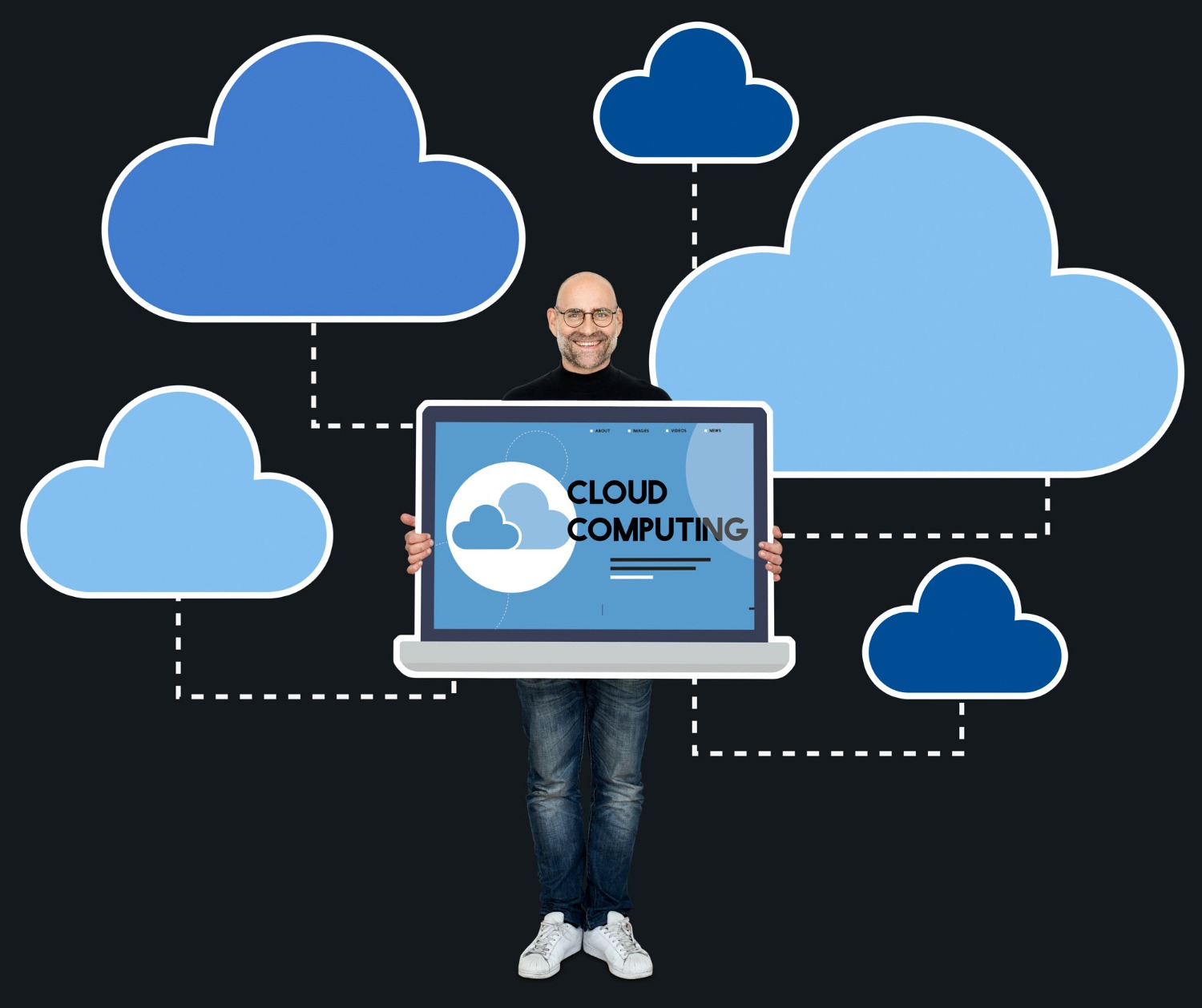What is Cloud Computing?
Cloud computing has revolutionized the way individuals and organizations access and utilize technology resources. At its core, cloud computing refers to the delivery of computing services—including servers, storage, databases, networking, software, and analytics—over the internet, commonly referred to as “the cloud.” This model allows users to access powerful computing capabilities without the need for significant upfront investments in physical infrastructure.
The appeal of cloud computing lies in its flexibility and scalability. Organizations can easily scale their resources up or down based on demand, ensuring they only pay for what they use. This “pay-as-you-go” pricing model not only reduces operational costs but also enhances efficiency by allowing businesses to focus on their core activities rather than managing complex IT environments.
As we explore the fundamentals of cloud computing, it becomes evident that this technology is not just a trend but a transformative force that enables innovation and agility across various sectors. From facilitating remote work to supporting advanced applications like artificial intelligence and big data analytics, cloud computing is reshaping how we think about and interact with technology in our everyday lives.
How Does Cloud Computing Work?
Cloud computing operates on a simple principle: instead of relying on local servers or personal devices to handle computing tasks, users leverage remote servers hosted in data centers around the world. These servers are managed by cloud service providers, who ensure they are maintained, updated, and secure. Users access these resources via the internet, paying only for what they use, much like a utility bill.
For example, when you stream a movie on Netflix, edit a document on Google Docs, or store photos on iCloud, you are using cloud computing. The processing power, storage, and software required for these tasks are handled by remote servers, not your local device.
Key Characteristics of Cloud Computing
Cloud computing is defined by several key characteristics that distinguish it from traditional computing models:
- On-Demand Self-Service: Users can provision computing resources (e.g., storage, processing power) as needed without requiring human intervention from the service provider.
- Broad Network Access: Cloud services are accessible over the internet from a variety of devices, including laptops, smartphones, and tablets.
- Resource Pooling: Cloud providers use multi-tenant models to serve multiple customers with shared physical resources. Virtualization technology ensures that each user’s data and applications remain isolated and secure.
- Rapid Elasticity: Resources can be scaled up or down quickly to meet changing demands. For instance, an e-commerce website can handle increased traffic during a sale by temporarily scaling up its server capacity.
- Measured Service: Cloud computing operates on a pay-as-you-go model, where users are billed based on their usage. This eliminates the need for large upfront investments in hardware and software.
Types of Cloud Computing Models
Cloud computing is typically categorized into three main service models, each offering different levels of control, flexibility, and management:
- Infrastructure as a Service (IaaS):
- Provides virtualized computing resources over the internet.
- Users can rent virtual machines, storage, and networking infrastructure.
- Ideal for businesses that want to avoid the cost and complexity of managing physical servers.
- Examples: AWS EC2, Microsoft Azure Virtual Machines, Google Compute Engine.
- Platform as a Service (PaaS):
- Offers a platform for developing, testing, and deploying applications.
- Includes tools like databases, development frameworks, and operating systems.
- Allows developers to focus on coding without worrying about underlying infrastructure.
- Examples: Google App Engine, Microsoft Azure App Services, Heroku.
- Software as a Service (SaaS):
- Delivers software applications over the internet on a subscription basis.
- Users can access applications directly through a web browser without installing or maintaining them locally.
- Examples: Gmail, Microsoft 365, Salesforce, Zoom.
Types of Cloud Deployment Models
Cloud computing can also be deployed in different ways, depending on the needs of the user or organization:
- Public Cloud:
- Services are provided over the public internet and shared across multiple customers.
- Cost-effective and scalable, making it ideal for small businesses and startups.
- Examples: AWS, Google Cloud, Microsoft Azure.
- Private Cloud:
- Services are dedicated to a single organization and hosted either on-premises or by a third-party provider.
- Offers greater control and security, making it suitable for industries with strict compliance requirements (e.g., healthcare, finance).
- Examples: VMware, OpenStack.
- Hybrid Cloud:
- Combines public and private clouds, allowing data and applications to be shared between them.
- Offers flexibility and optimization of existing infrastructure.
- Ideal for businesses with fluctuating workloads or sensitive data.
- Multi-Cloud:
- Involves using services from multiple cloud providers to avoid vendor lock-in and enhance resilience.
- Requires careful management to ensure compatibility and security.
Benefits of Cloud Computing
The adoption of cloud computing has brought numerous benefits to individuals and organizations alike:
- Cost Efficiency:
- Eliminates the need for upfront capital investment in hardware and software.
- Operates on a pay-as-you-go model, reducing operational costs.
- Scalability:
- Resources can be scaled up or down based on demand, ensuring optimal performance and cost savings.
- Flexibility:
- Users can access cloud services from anywhere with an internet connection, enabling remote work and collaboration.
- Disaster Recovery and Backup:
- Cloud providers offer robust backup and recovery solutions, ensuring data is safe in case of hardware failure or cyberattacks.
- Automatic Updates:
- Cloud providers handle software updates and security patches, reducing the burden on users.
- Environmental Impact:
- By sharing resources and optimizing energy usage, cloud computing can reduce the carbon footprint compared to traditional data centers.
Challenges of Cloud Computing
Despite its many advantages, cloud computing is not without challenges:
- Security and Privacy:
- Storing sensitive data on remote servers raises concerns about data breaches and unauthorized access.
- Downtime:
- Reliance on internet connectivity means that outages or disruptions can impact access to cloud services.
- Vendor Lock-In:
- Migrating data and applications between cloud providers can be complex and costly.
- Compliance:
- Organizations must ensure that their use of cloud services complies with industry regulations and data protection laws.
- Limited Control:
- Users have less control over the underlying infrastructure compared to on-premises solutions.
The Future of Cloud Computing

Cloud computing continues to evolve, driven by advancements in technology and changing business needs. Emerging trends include:
- Edge Computing:
- Processing data closer to the source (e.g., IoT devices) to reduce latency and improve performance.
- Serverless Computing:
- Allows developers to build and run applications without managing servers, further reducing operational complexity.
- Artificial Intelligence and Machine Learning:
- Cloud platforms are increasingly integrating AI and ML capabilities to enable smarter applications and services.
- Quantum Computing:
- While still in its infancy, quantum computing has the potential to revolutionize cloud computing by solving complex problems faster than classical computers.
Conclusion
Cloud computing has fundamentally transformed the way we interact with technology, offering unparalleled flexibility, scalability, and cost-efficiency. From streaming services to enterprise-level applications, the cloud has become an integral part of our daily lives. However, as with any technology, it comes with its own set of challenges, particularly around security and privacy. By understanding what cloud computing is, how it works, and its benefits and limitations, individuals and organizations can make informed decisions about leveraging this powerful technology. As the digital landscape continues to evolve, cloud computing will undoubtedly remain at the forefront of innovation, shaping the future of technology for years to come.




